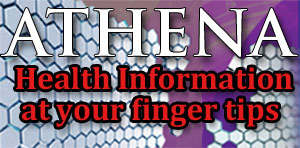Supracondylar fracture
The supracondylar fracture is the most single common fracture in the elbow region. Statistics show that 44% of elbow fractures are supracondylar fractures. The supracondylar fracture occurs above the elbow joint through the growth plate of the humerus. Many activities can cause supracondylar fracture in the elbow in children. But jungle gyms are the primary reason for this type of occurrence. Kids falling from jungle gyms injure their elbows as they fall to the ground. Other common activities that can cause elbow injuries are gymnastics, football, jumping on beds and rough play. These injuries commonly occur in children between the ages of three to eight years. Supracondylar fracture is more common in children than adults. About 60 % of fractures involve the left hand. This type of fracture occurs due to fall onto an outstretched arm.
Signs of supracondylar fracture include inability to straighten or bend the elbow and pain around the elbow joint. The patient may notice swelling around the elbow and discoloration around the injured area. Swelling and painful deformity can be seen in case of severe injury. The physician evaluates the child's arm and elbow for any signs of damage to the nerves and blood vessel around the elbow joint. X rays are often used to diagnose elbow fractures.
Treatment options for supracondylar fracture depends upon the location and amount of displacement of the fracture.
- When the physician diagnoses the supracondylar fracture of the humerus, the most common form of treatment is to immobilize the arm.
- Splinting is the treatment especially when minimal displacement occurs.
- Casts are often used to treat supracondylar fractures but not after the initial injury. Elbows that are splinted for a week before a cast may be placed after the swelling has subsided.
- Surgical option most of the times include using pins to stabilize the fracture in proper position.
- A small incision becomes necessary to reposition the fracture and to protect the nerves around the elbow joint.
- Appropriate pain medications are prescribed depending upon the child's level of pain.
There are several complications that can develop from a supracondylar fracture. The commonest of complication is damage to the nerves. In some cases even paralysis may be caused. Severely displaced Supracondylar fractures may rupture the brachial artery. This results in Volkmann's disease, which is a permanent forearm and hand deformity.
Tags: #Supracondylar fracture
At TargetWoman, every page you read is crafted by a team of highly qualified experts — not generated by artificial intelligence. We believe in thoughtful, human-written content backed by research, insight, and empathy. Our use of AI is limited to semantic understanding, helping us better connect ideas, organize knowledge, and enhance user experience — never to replace the human voice that defines our work. Our Natural Language Navigational engine knows that words form only the outer superficial layer. The real meaning of the words are deduced from the collection of words, their proximity to each other and the context.
Diseases, Symptoms, Tests and Treatment arranged in alphabetical order:

A B C D E F G H I J K L M N O P Q R S T U V W X Y Z
Bibliography / Reference
Collection of Pages - Last revised Date: December 18, 2025



